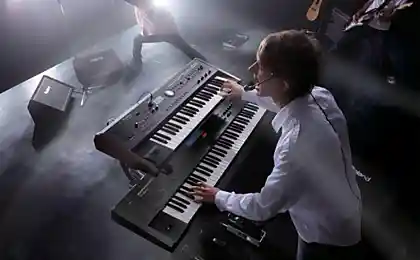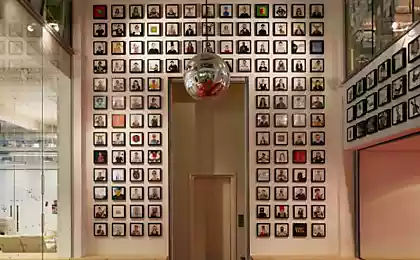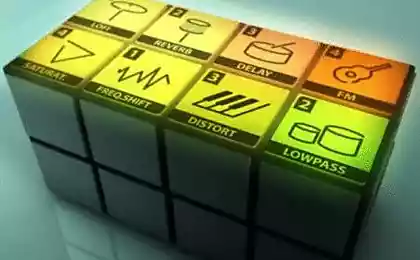2448
On the shortcomings of modern synthesizers and how to fight them
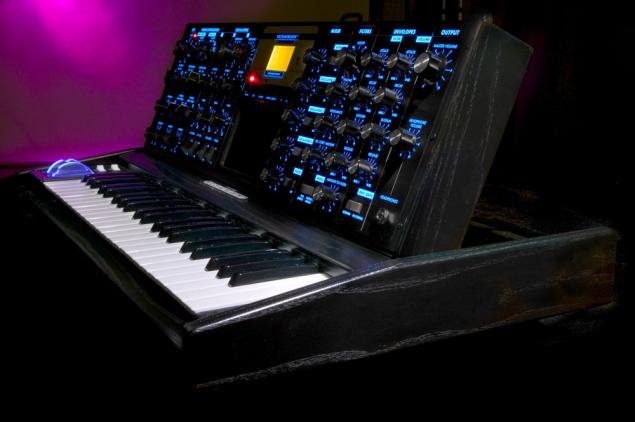
Everyone loves music. But not everyone can play it. Few are able to create it, and even fewer people create for this musical instruments. Legendary tools, along with the legendary composers and musicians are part of history, but few people are interested in these same tools. We are interested in. So why not make the history of a microscopic mite?
Background h4> I remind you that it is - my vision of history. Who's Afraid of misrepresentation, well, or just knows, can skip this topic. I>
It all started in the 60s of last century, when electronic music was cut and glued tape some enthusiasts who believed that she was - the future. They certainly have not lost, although the conditions for its entry, to put it mildly, then left much to be desired, and could afford such a pretty rich musicians and engineers. Why engineers? Because they created those "cosmic" sounds huge, shkafopodobnyh typewriters, whose name was sound synthesizer. They were monophonic instruments, but polyphony was not really need them - when you press a single key that they can play as many votes as he was rich musician - synthesizer could safely dokomplektovyvatsya new and new modules, which are below. Often there was no keyboard at all, or contained only a couple of octaves - it almost does not matter. To deal with the synthesis of sound and record electronic compositions, was not enough to just be a musician - with a heap of wires and a huge closet just wanted to take my guitar and pass by. So music was written by those who were far from it, which led to the fact that synthesizers associated with tons of wires ...
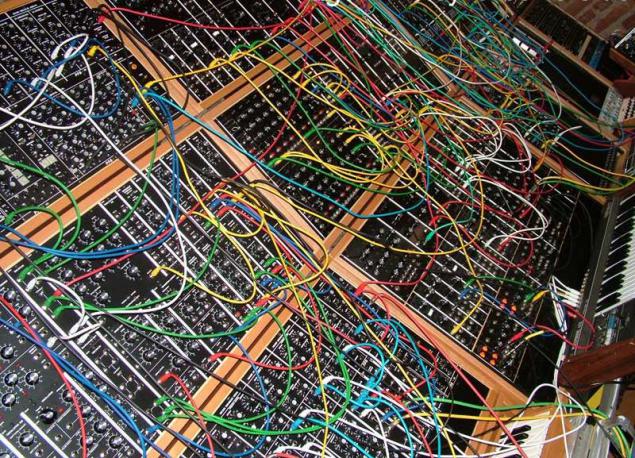
... And healthy wardrobes!
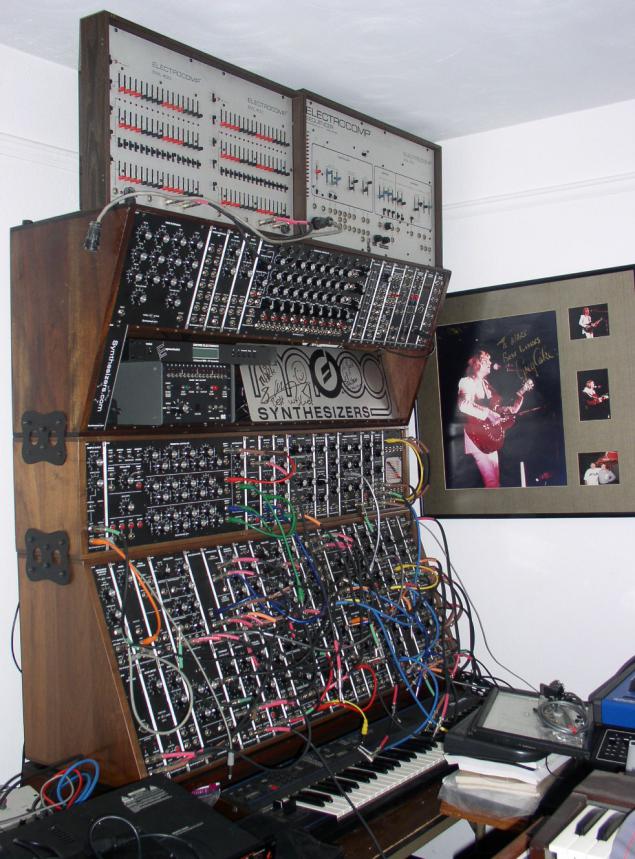
But in the '70s sounds nagremevshie known "modular", created by students under the floors of boring engineering university, began to cause downright ochumenny interest in almost all of the then bands and musicians. Huge, no, the biggest role in the development of the "electronics" played American company «Moog», named after the founder and produce up to that time the head tube. Robert Moog was just a superhero, devoting the rest of his life analog synthesizers. His company is still successfully exists, and its products are an ideal sound quality vintage analog synthesizers.
By the way, In Soviet Russia, too, did the analog synthesizers, which were known far beyond its borders. Here is a classic example of the legendary Polivoks.
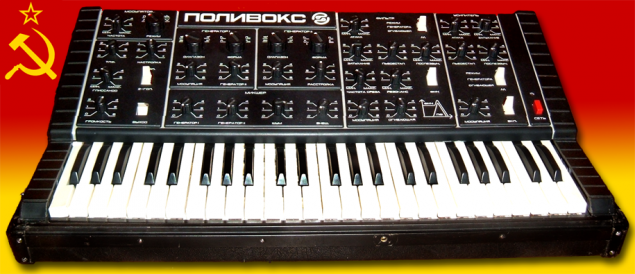
Somewhere in the 80s appeared and began to develop digital synthesizers; their age continues to this day, as is easily seen. But people tend to get tired. Companies such as Casio or Yamaha suddenly lost customers (but not popularity), because people are tired of podnadoevshih presets, remembering warm and a versatile sound old swingers, rushed to his grandfather to the attic to ensure that their return. Feeble and almost zagnuvshiesya company still produces modular synthesizers, prosekli chip and began to wring price. And some of the newly created company, for example Waldorf, this chip not only prosekli but also made them useful conclusions, prepared a surprise for later. When it became clear that the modular pleasure not everyone can afford, and got presets, Waldorf bore Waldorf Q, synth new generation, a new method of wave tables and combines all the things that we do not have enough, fans of electronic music: small size, full control synthesis, and also was equipped with buns for subtractive change the sound.
Waldorf Q in the capable hands
Well, and then you know yourself - computers, plug-ins, less expensive radio ... now the equal right to exist have all kinds of synthesizers, they claimed, but still dominated by computers and digital synthesis, and even more - presets (yes, yes, so your dabchik sounds at times like this the same way - using the same modulation parameters, all related presets).
Yamashka vorksteyshn as an example of modern digital synthesizer 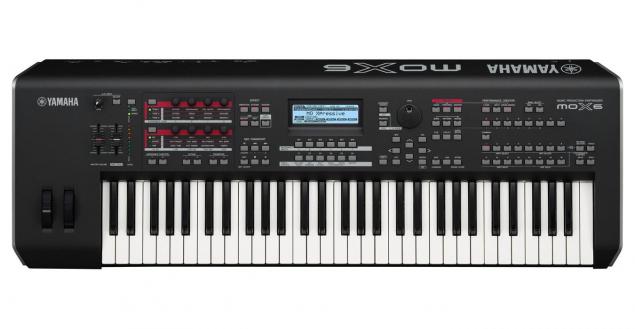
Well, the history of all of the small exception: large modular synthesizers back again. Details are cheaper, diagrams, stored before firms in the strictest confidence, appeared in the now-speed Internet access. So why not? .. Bach, where the soldering iron?
Actually, the project h4> Taking into account the history of these tools crazy capabilities of computers and cheap stones, the availability of old patterns and even having them step by step instructions and tutorials, we decided to create something monstricheskoe ... But first I will try list the advantages and disadvantages of the classical modular and modern digital synthesizers (hardware synthesizers will be considered in the sense of physically existing as tools).
Cons purely modular synthesizers:
They are large; They are unstable (heating components and tuning, not a modern modular home-grown modern Circuits); Thousands of wires ( patchcords connection modules, in the best case - matrix contacts, but then the chances are reduced and the tool ceases to be "infinite»); We would like to dolbanut chord, but work only lower key; Want to save this configuration for future use, and now gather that something else - sorry, will not work. Draw on paper shemku fotkat position potentiometers, toggle switches and switches - and maybe restore; knobs themselves are not rotated. If you want to simultaneously turn ten pens with different rates for a nice change of sound - call me many-armed Hindu gods. Pros: cords (despite the inconvenience, this is the real, intuitive and tangible connections, and not covered by the program, carrying tons of code, logs and an endless list of options of where it is possible to connect and what to do) ; «Infinity" (got some money? Buy a new module! - the size and scope of the synthesizer are limited only by imagination holder of the instrument and the thickness of his wallet (well, room size, hehe). Almost all of the modules are independent and can be connected wherever your heart desires, only served every food; Flexibility. (kind of architecture I want, and such navorocheno); Your sound is absolutely unique. This is no sound to your liking, it You can change right now, during the game. A wide range of sound - from low to inaudible inaudible upper with the same quality as the first and the second. In general, this is the sound.
Cons digital synthesizers: Limited architecture; An immutable architecture; Perhaps poor quality reproduction of the lower frequencies, which is why they can share in the directions: to dubstep for drum for pads, backgrounds and noise.
Pros: Small size; Provides absolutely all kinds of synthesis (but each individual tool is usually a combination of a maximum of two of them); You can save and load configuration them directly while playing touch of a button; Polyphony. More money - more polyphony; Allows the wide range of work with sound, playback and recording of information to, equalization and distribution channels (so-called feature workstations);
I wanted to combine these two types of instruments and try to get rid of some disadvantages and thus without losing their dignity. But to begin with - obuchalka on how arranged modular synthesizer. Can rummage around here тут, Left must find a section MFOS In The Classroom / Analog Synth 101 - everything is beautifully written, though in English.
Here are the basic modules (briefly): generator generator (VCO, Voltage Controlled Oscillator). Usually able to generate a sinusoidal, sawtooth, triangular, and rectangular wave. For a rectangular waveform is applied setting pulse width (Pulse Width). Of greatest interest is sawtooth free - it contains the most harmonics. Since we subtractive synthesis (subtraction - take the signal and filter out all unnecessary), the more harmonics contains the original signal - the better. The frequency of the oscillator can be промодулирована voltage by means of the keyboard or another oscillator. The larger generators, the more opportunities the modulation of some other signals and merrier.
LFO LFO (LFO - Low Frequency Oscillator) - a special type of generator is designed to generate different waveforms with very low frequency used for modulation. The period of these signals can reach several minutes, so the man most of the frequency range of the generator will not be heard. However, in some samples, there are several modes for a variety of purposes.
Envelope Generator the EG (Envelope Generator) - as a modulation source. Generates a signal to a special form, which has characteristics such as attack, decay, and the level of attenuation. Attack - the time taken to increase the signal until it starts decline. Activated by pressing a key on the keyboard or on the arrival of the Gate signal input to the generator. Recession - time spent on the decrease of the signal to a level well controlled. Attenuation - the time spent on the attenuation of the signal from the previously defined level to zero, starts when you release the key or decline Gate signal at the input. Could be shortened to cycle Attack-attenuation.
Mixer mixer - just mix the signals in different proportions.
Filter Filter (VCF - Voltage Controlled Filter) - filters the incoming signal. There are different types of filters having different filtering rigidity (typically 12 or 24 dB per octave) and different types: low-pass filter and a high frequency band. Main features - the cutoff frequency and resonance. Raises the level of resonance frequencies that are close to the cutoff frequency, and therefore the sound is more "rigid". At maximum resonance self-excitation occurs and begins generating a sine wave with a frequency equal to the filter cutoff. These characteristics can be changed by means of the modulating signal.
Power Amplifier (VCA - Voltage Controlled Amplifier) - is used to modulate the signal with another signal.
Synthesizer normal minimum - two oscillators, a mixer with three inputs and one output, one filter, one LFO, two envelope generators (well, and one can), one amplifier. These small systems do not even provided with patchcords - Be compounds bit combinations, you can do the buttons and switches. Sounds oscillators, as well as an illustration of the operation of each module in different modes and video can be seen at all the same site MFOS - Section Analog Synthesiser Modules / Path to Your MFOS Modular / & lt; & lt; selected module & gt; & gt ;.
Plans, plans, plans ... h4> Our main task - to build a modular synthesizer, all the parameters of which (excluding the connection modules) will be controlled by microcomputer can be crammed into memory for later use. It also opens up an opportunity for a substantial reduction in the dimensions of the tool, as most of his size is not printed circuit boards and circuits, and the front panel. It can beat this way: let's say we want to have three oscillators, respectively, will be three identical front panel. You can make a front panel which display the inputs / outputs of the oscillators, and three buttons. To change the frequency of the first oscillator, it is necessary to press the first button and turn the frequency knob to change the frequency of the second - to press the second button and turn the same pen, and so on. In this space saving is slightly less than three times. With this method all the resistors must be replaced for the front panel on the transducer, the state of which is read and memorize the central controller, and in accordance with the data to change the resistance of the resistor in the circuit. Also with the help of the controller can record sound and then use these pieces as presets, which will undoubtedly make a synthesizer 20% cooler. And yet ... Yes, that only can be done with this controller! To achieve its goal, whether we like it or not, will have to make more than one intermediate tool, because only by experience can be done at all anything (well, not from scratch, a pancake).
I would like to know how people will react to such an idea, here. Well, I hope the first post was a success, thanks to those who read to the end.
Source: habrahabr.ru/post/221831/
Mars today and yesterday. Brief Chronicle of robotic geologists
PocketBook 626 vs. Sony PRS-T3: tested on humans





